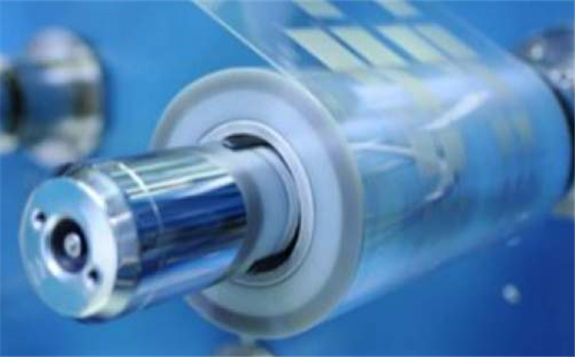Strategic Elements Ltd has almost trebled this morning with subsidiary Australian Advanced Materials (AAM) agreeing to develop a self-charging battery technology in a collaboration with the University of New South Wales and CSIRO.

This work, which is part-funded by the Australian Research Council, is targeting to develop new electronic materials for a wide range of uses in flexible electronics and making significant advances in energy-efficient data storage devices.
Self-charging
The battery cells create electricity from humidity in the air or skin surface to self-charge themselves within minutes and no manual charging or wired power is required.
They are created with a printable ink and are ideally suited for use in Internet of Things (IOT) devices.
Shares up 194%
Shares have surged as much as 194% to 19 cents intra-day, a new four-year high for the company, which is registered by the Australian Federal Government as a Pooled Development Fund with a mandate to back Australian innovation.
Strategic Elements managing director Charles Murphy said: “Early-stage results are extremely promising as we apply years of experience and intellectual property in electronic inks into the development of a Battery Ink that generates electricity from the environment.
“From the Automated Robotic Security Vehicle we are building with US giant Honeywell, the ongoing commercialisation of the Nanocube Memory Ink, this new development in Battery Ink and other commercial activities on the horizon, SOR is generating significant momentum.”
Strong potential advantages
The battery ink will be developed by integrating significant existing ink formulation and printed electronics intellectual property from the company’s Nanocube Memory Ink technology, with an advanced graphene oxide material.
Strong potential competitive advantages exist over lithium-based batteries that suffer from weight, safety (flammable) and needs a constant power supply to recharge.
Benefiting from exceptional physicochemical properties, graphene-based materials can harvest energy from external factors such as moisture and heat.
Graphene oxide is formed by the oxidation of graphite which is cheap and readily available.
Graphene oxide is dispersible in water and other solvents.
Early-stage work with graphene oxide ink at UNSW includes:
Fabrication of over 100 battery cells by coating the graphene oxide ink onto glass;
Self-charging time of around three minutes using water vapour in the air;
Extremely thin battery cells at around 10-20 microns, which is thinner than a human hair;
Small size of 1 centimetre, with potential to be much smaller; and
Generation of more than 0.7 volts of power a cell. 3.7 volts goal from connected cells in 12 weeks.
Battery Ink development
Development of the Battery Ink at UNSW in the next 12 weeks will be focused on:
Materials engineering and optimisation of ink formulation;
Achieving scale-up to large batch size of Battery Ink of at least 1 litre; and
Successful prototype connecting multiple battery cells producing at least 3.7 volts.
Further development challenges include reducing battery cell size whilst increasing current output at lower humidity levels and demonstrator device development.
Batteries for IoT
Technological advancements and adoption of various Internet of Things (IoT) devices such as wearables, smart meters, various sensors and home automation products, are the key driving growth in the battery market.
The global battery market for IoT is already significant with US$8.7 billion in 2019 and is projected to grow to US$15.9 billion by 2025 .
A growing need for thin and flexible batteries in IoT and medical devices, along with inherent advantages of micro-batteries provides opportunities.
Funding
Existing resources from within the project will be allocated towards integrating the printed Nanocube Memory with printed self-charging batteries.
The total budget for the collaborative project has been set at around $1.069 million for up to three years.
The Australian Research Council Linkage funding provides $320,000 in cash while AAM, which retains Intellectual property and commercialisation rights, is providing $160,000 cash and $150,000 in-kind support and services.
CSIRO is providing around $25,000 in-kind support and services and UNSW is providing $414,000 in-kind support and services.
Strategic Elements has also opted to increase cash support by $30,000.